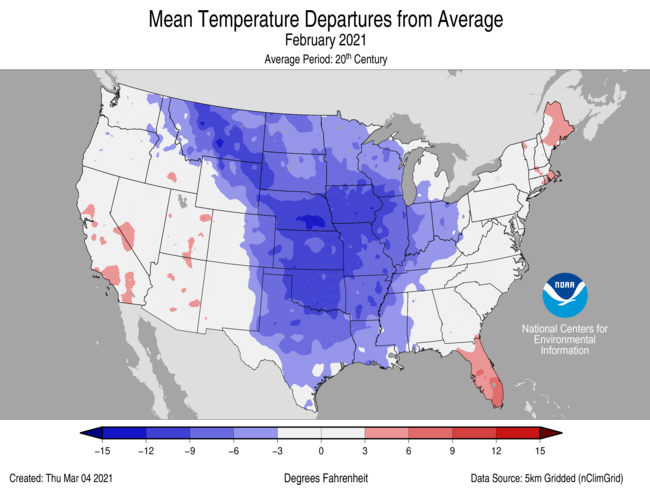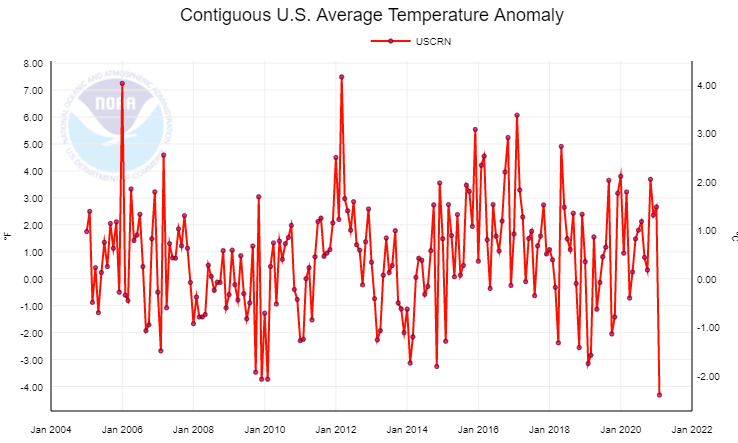As we have previously mentioned on ClimateRealism, last month’s winter storms in the United States caused record subzero temperatures, power outages for millions of homeowners when “green energy” failed, and more than two dozen deaths.
It was also the coldest February in over three decades. This was mainly due to the “polar vortex” blasting extremely cold air across the central United States.
The cold air in the lower 48 states did not come at the expense of Alaska. Alaska experienced its coldest February since 1999.
The main driver for the cold weather across the contiguous U.S. during February was a strongly negative Arctic Oscillation (AO) during the first half of the month. This may have been the result of a sudden stratospheric warming event that occurred in January. The negative AO pattern favors a cold air outbreak over the central U.S., often referred to as a “polar vortex”.
The National Oceanic and Atmospheric Administration (NOAA) officially reported that during February, the average contiguous U.S. temperature was 30.6°F, 3.2°F below the 20th-century average. This ranked as the 19th-coldest February in the 127-year period of record and was the coldest February since 1989.

















Mar 14, 2021 Troublesome Global Warming In Wyoming
Possibly the largest snowstorm on record here in Cheyenne.
https://youtu.be/ZaFDETtvokQ
I would like to see if there is a correlation between years with a high incidence of hurricanes and a negative AO as hurricanes warm the stratosphere as they travel north during the late summer months.
Isn’t the polar vortex a function of climate chenge?
No, it’s a function of weather.